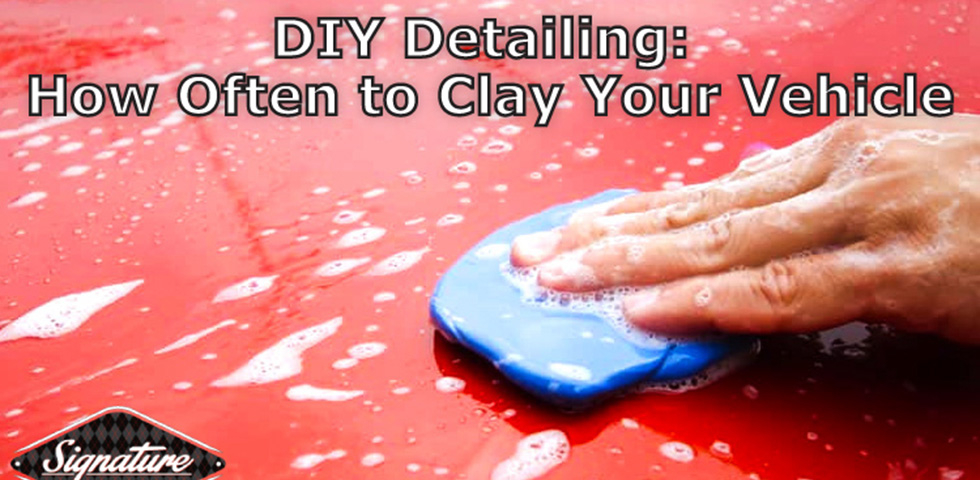
A fine vehicle finish is smooth to the touch, meaning the surface is free of all topical contamination. When topical contamination sticks to surfaces, and cannot be removed with basic vehicle wash techniques, then it must be removed physically.
The process of “claying a vehicle” is also known as physical decontamination. This physical decontamination process removes most all: topical contaminants (the particles that feel rough to the touch) and most topical forms of protection such as waxes and sealants.
Therefore, after the claying process is completed it’s important to immediately dry the vehicle and reapply any topical protection to your freshly decontaminated vehicle surfaces.
How the Vehicle Claying Process Works
Claying (physical decontamination) a surface is actually a simple process. However, to be effective it requires patience and a thorough technique.
After thoroughly washing and drying all vehicle surfaces a dedicated clay lubricant is sprayed on a working area. Next a traditional clay bar, or a synthetic clay mitt, clay towel, or clay pad is rubbed over the surface, in a single direction in overlapping strokes, to remove the topical contamination.
As the clay media is rubbed over the surface you will feel the particles and hear a scratchy-type noise if contamination remains. If contamination is gone the clay media will glide without resistance in silence.
If using traditional clay, the clay will need to be kneaded after use. This is necessary because traditional clay works by means of friction, embedding the topical contamination within itself.
After a panel is completed, any picked up topical contamination is lodged on the flat surface of the clay. To have fresh clay, that will more readily pick up contamination and not potentially scratch the surface of the next panel, the clay must be kneaded and then flattened to expose fresh clay.
For synthetic clay media such as mitts, towels, or pads the surface of the clay media should be flushed using the clay lubricant. For even more effective cleaning of synthetic clay media, after flushing with the synthetic clay media with a clean and non-linting microfiber towel to remove any contaminants between panels.
How Often to Clay Vehicle Surfaces
The frequency to clay (physically decontaminate) a vehicle surface depends on several factors. Most of the factors that cause contamination build-up relate to how much, and what types of contamination may build up on vehicle surface.
Common factors that determine when a vehicle surface requires physical decontamination are:
- Frequency of Use
- Frequency of Vehicle Washing
- Is the Vehicle Garage, Covered, or Stored Outside?
- What are the regular weather patterns of the vehicle’s native climate?
- What is the local plant or wildlife that may contribute to contamination in the air.
- What man-made factors may contribute to surface contamination (factories, large population, house painting, road work, etc.)?
- Is the vehicle driven on rural roads or large freeways?
- Does the surface feel smooth or rough to the touch?
Vehicles which are washed regularly and stored in a garage may not need to be clayed for a year or two.
However, vehicles which are driven daily, stored outside, and/or seldom cleaned may require to be clayed within a couple months. Therefore, the learning lesson is to find a washing schedule that consistently removes topical contamination before it has a chance to build up and become attached to vehicle surfaces.
